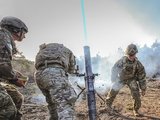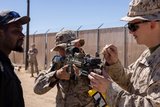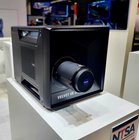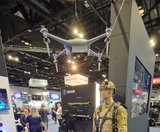Cubic tailors mortar simulator for the US Army
The company’s mortar trainer received improvements based on soldier’s feedback.
Australia’s Defence Science and Technology (DST) group is using a night vision laboratory to assess night vision technology under consideration for, or in use with, the Australian Defence Force.
The lab uses a lighting system designed to replicate the night environment in which the night vision devices are designed to work. The lights are calibrated to replicate the radiance levels a device would experience during different phases of the moon – as a result, the simulator is known as a moon simulator.
The simulator supports assessment of device characteristics and the system level performance, along with performance of the human operator or wearer.
The laboratory has recently been used to assist the Army School of Aviation, which had an issue with its training aircraft, and needed to fly in civilian airspace at night with pilots who were using night vision devices (NVDs).
Peter Gibbs, defence researcher at the lab, said: ‘The army aircraft, which would normally be flying with covert lighting designed to work with NVDs, are required to use navigation lights which non-defence pilots can see.
‘We are helping army assess lights suitable for civilian airspace that are not disruptive to the NVDs being used by the army pilots.’
The system has also recently supported army pilots who began experiencing visual fatigue when using assisted-vision technology such as head-up displays and night-vision goggles.
Maria Gavrilescu, defence researcher, said: ‘We are trying to understand the source of that fatigue and whether we can reduce it because any binocular device including virtual reality devices will have similar issues.
‘Imagine reading a book up very close, or through someone else’s glasses. You can still read it but if you try reading it for three hours straight you get eye-strain, headaches and possibly nausea. Night vision technologies can force your eyes to make unnatural movements. If pilots do this for a sustained period of time they can experience symptoms that may affect safety.’
The DST laboratory allows researchers to perform tasks with known levels of binocular misalignment, which is expected to be one of the sources of visual fatigue. The aim is to define good objective measures of visual fatigue.
Pending the success of these tests, further experiments will be planned to take place in one of the army’s training simulators.

The company’s mortar trainer received improvements based on soldier’s feedback.

The company will operate in two new locations in the coming years to better support US services.

This type of tool provides more realistic training easing the incorporation of new scenarios that accurately represent the threats of the battlefield.

The Engineering Corps has been conducting individual instruction using FLAIM Systems’ Sweeper and should start collective deployments in 2025.

The next-generation platform is motion-compatible and can be used in OTW and NVG applications.

The system can be used to prepare soldiers for both drone offensive operations and CUAS missions.